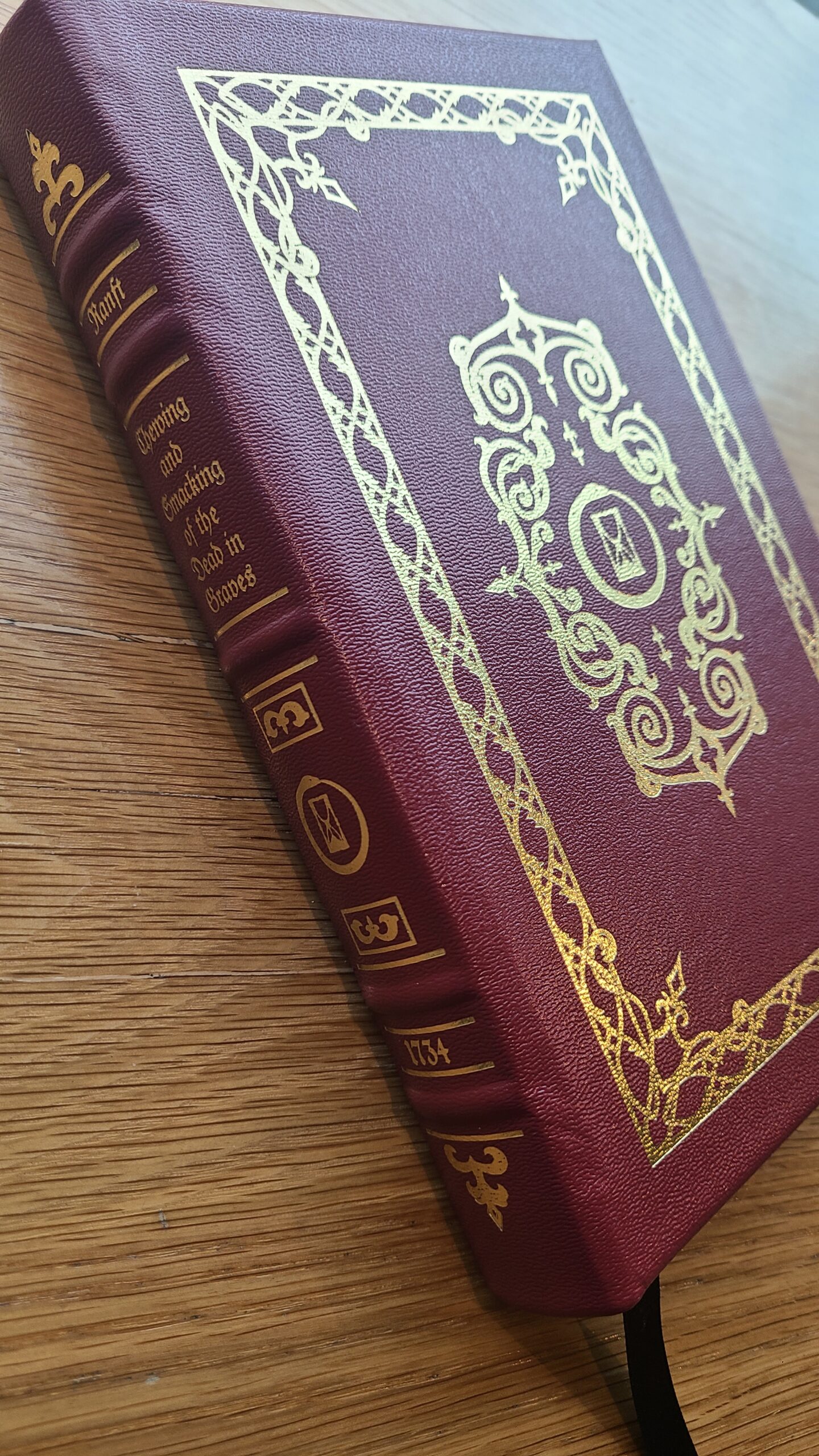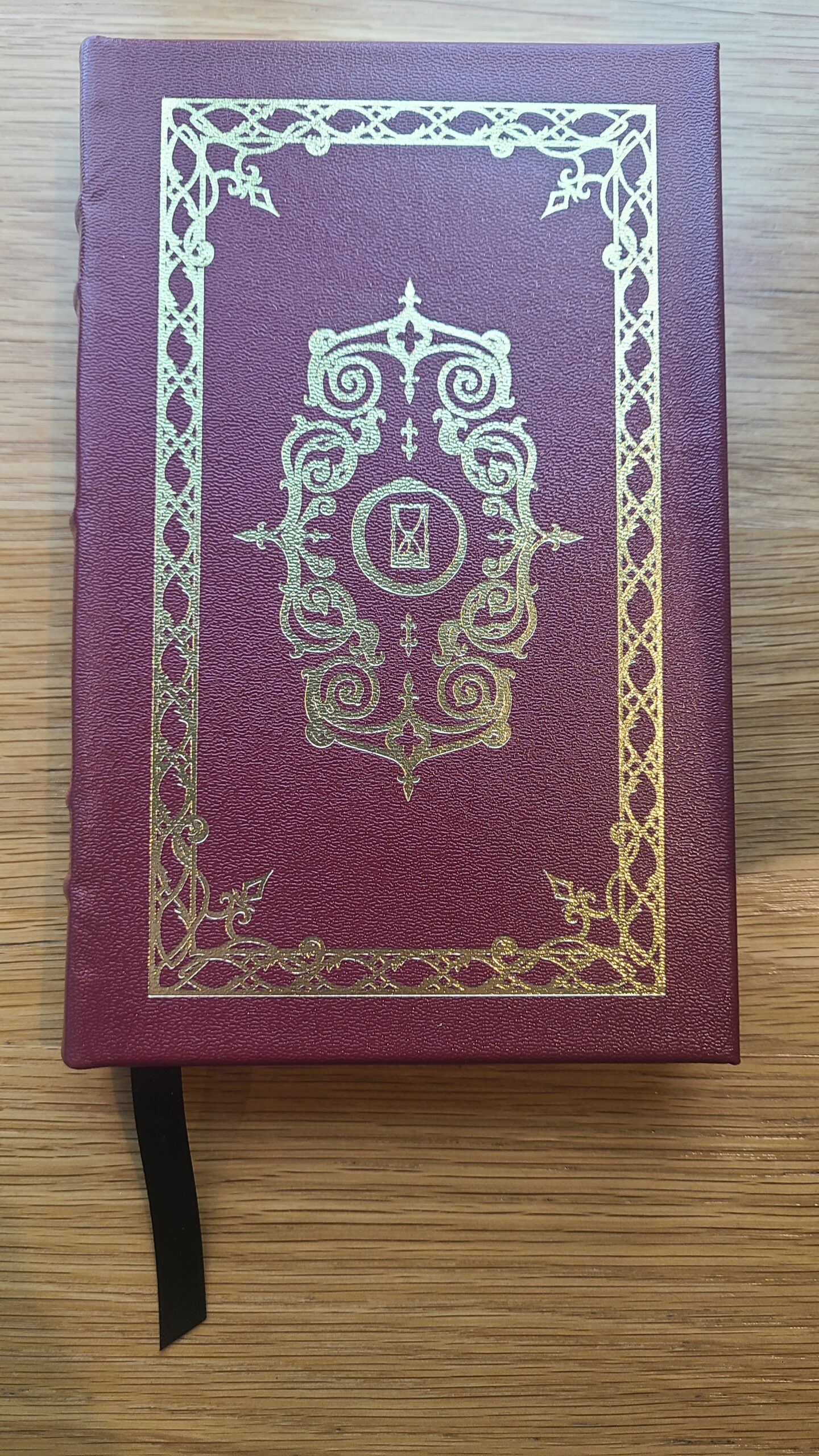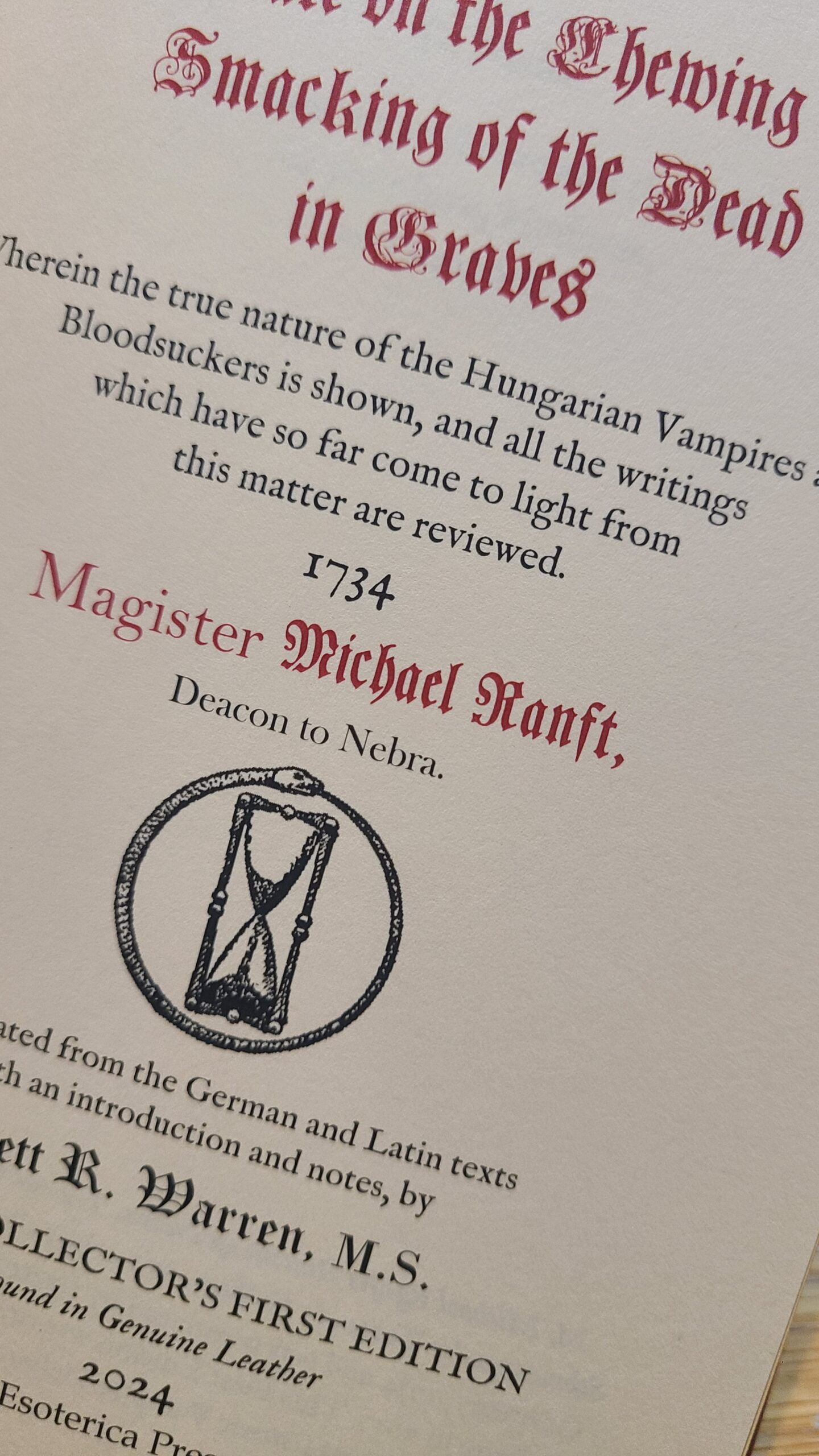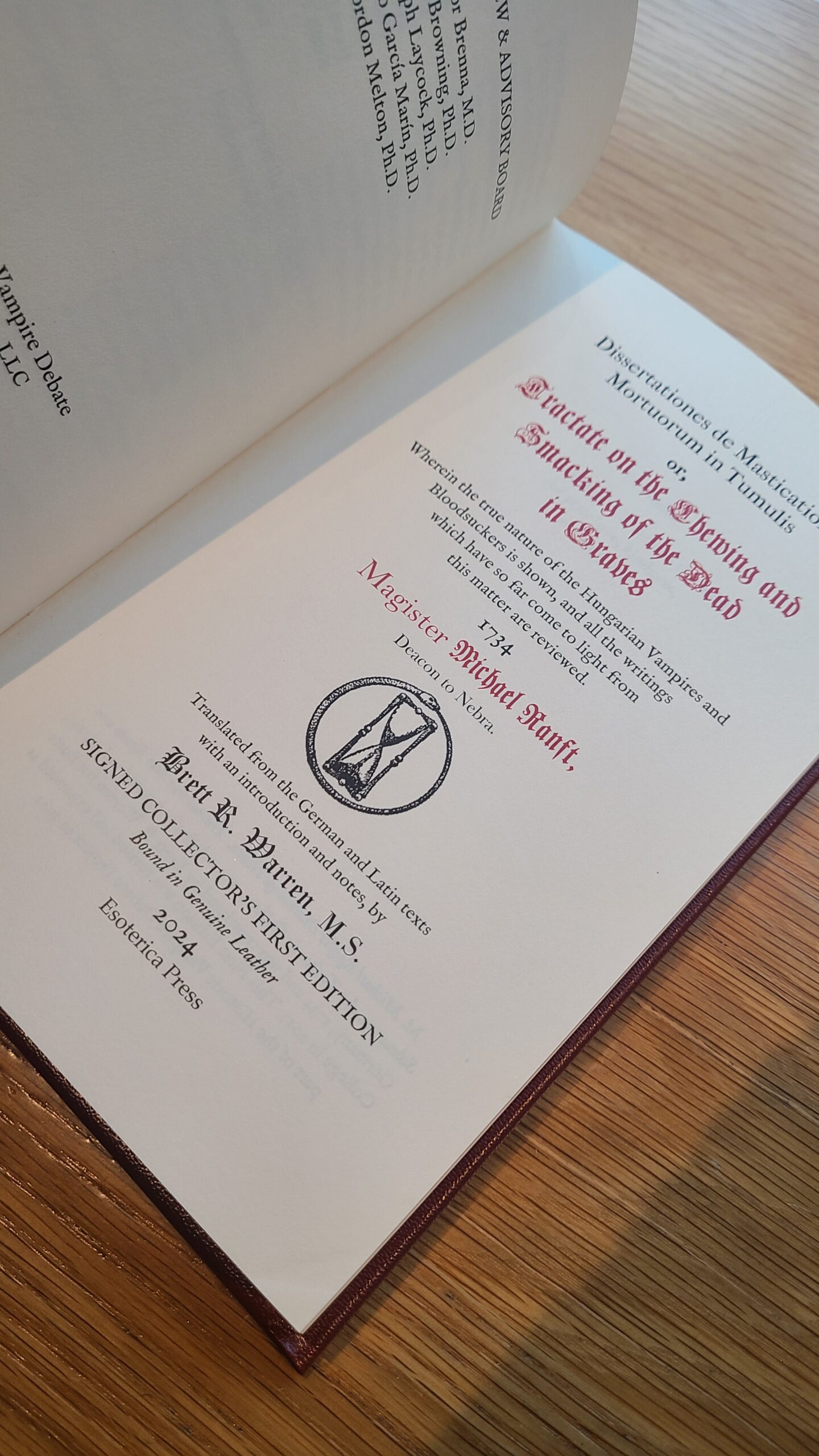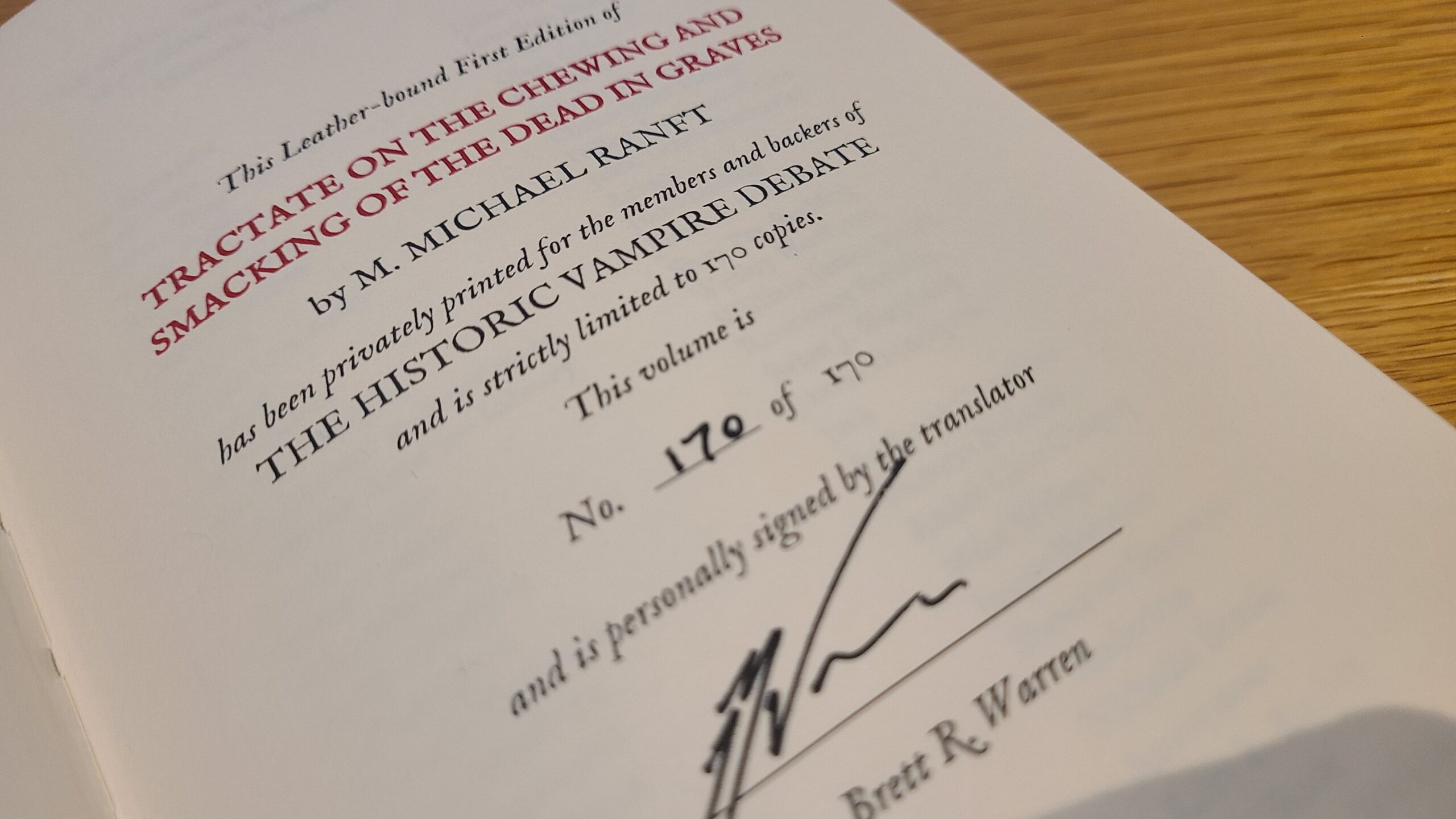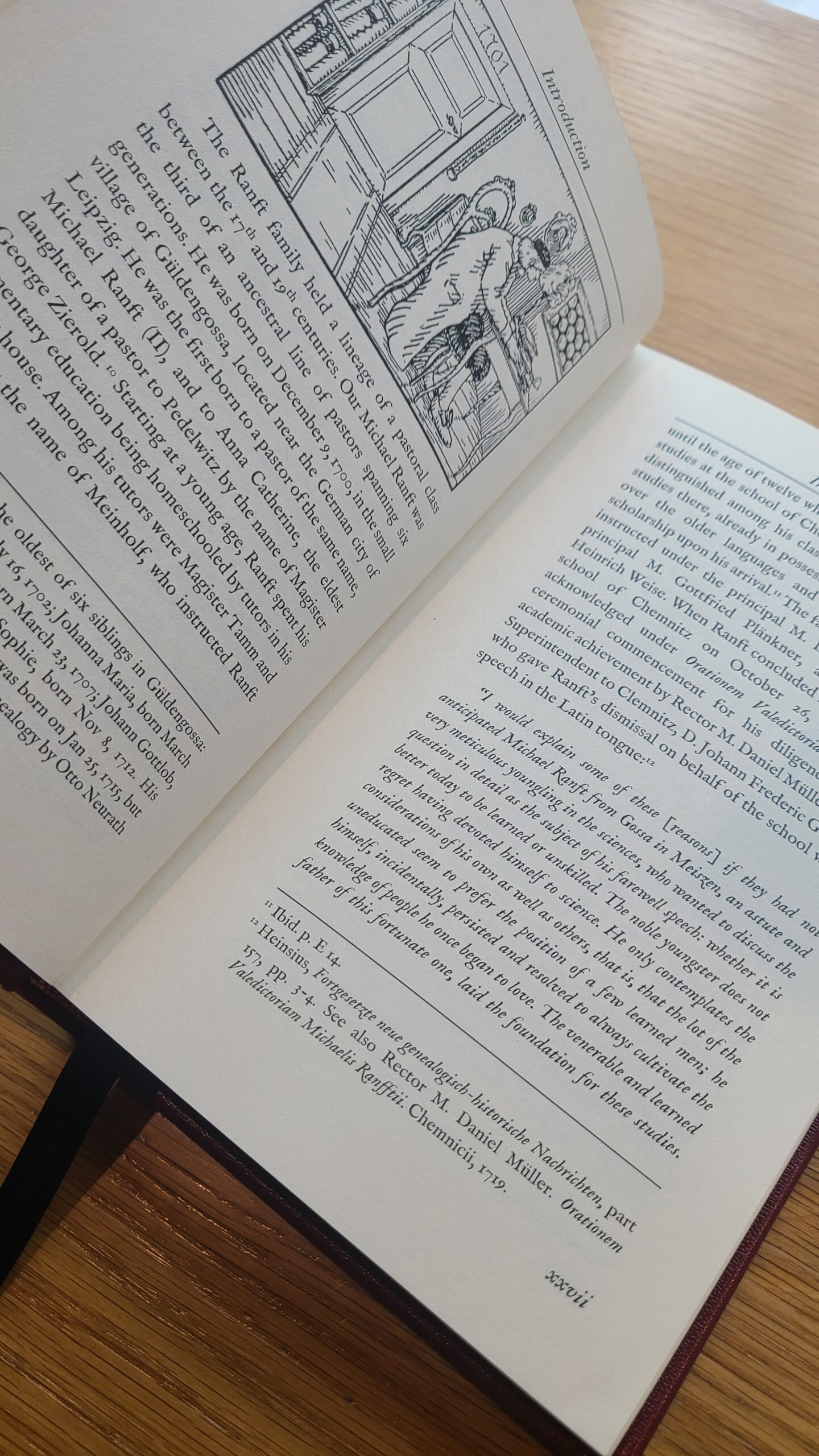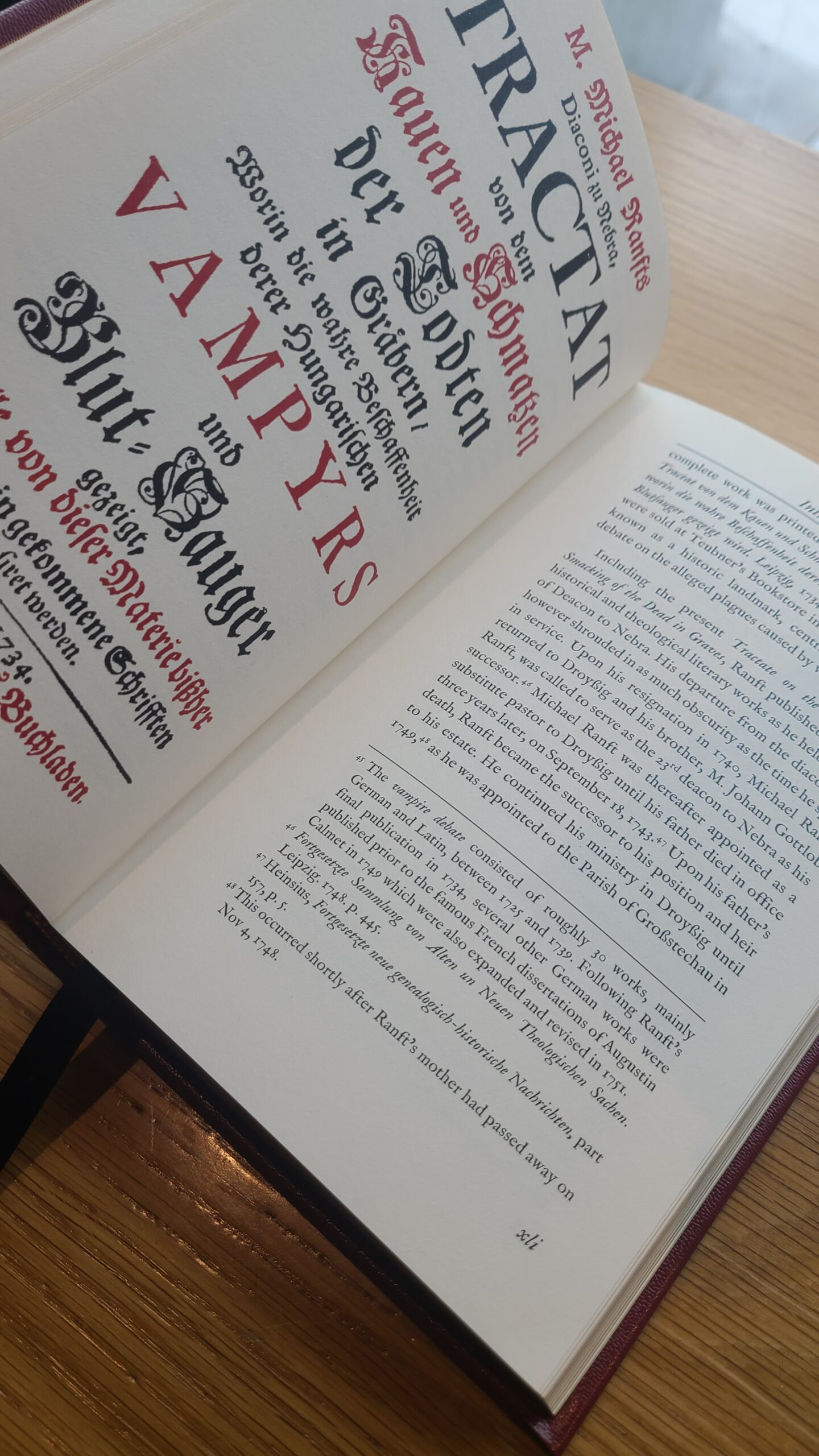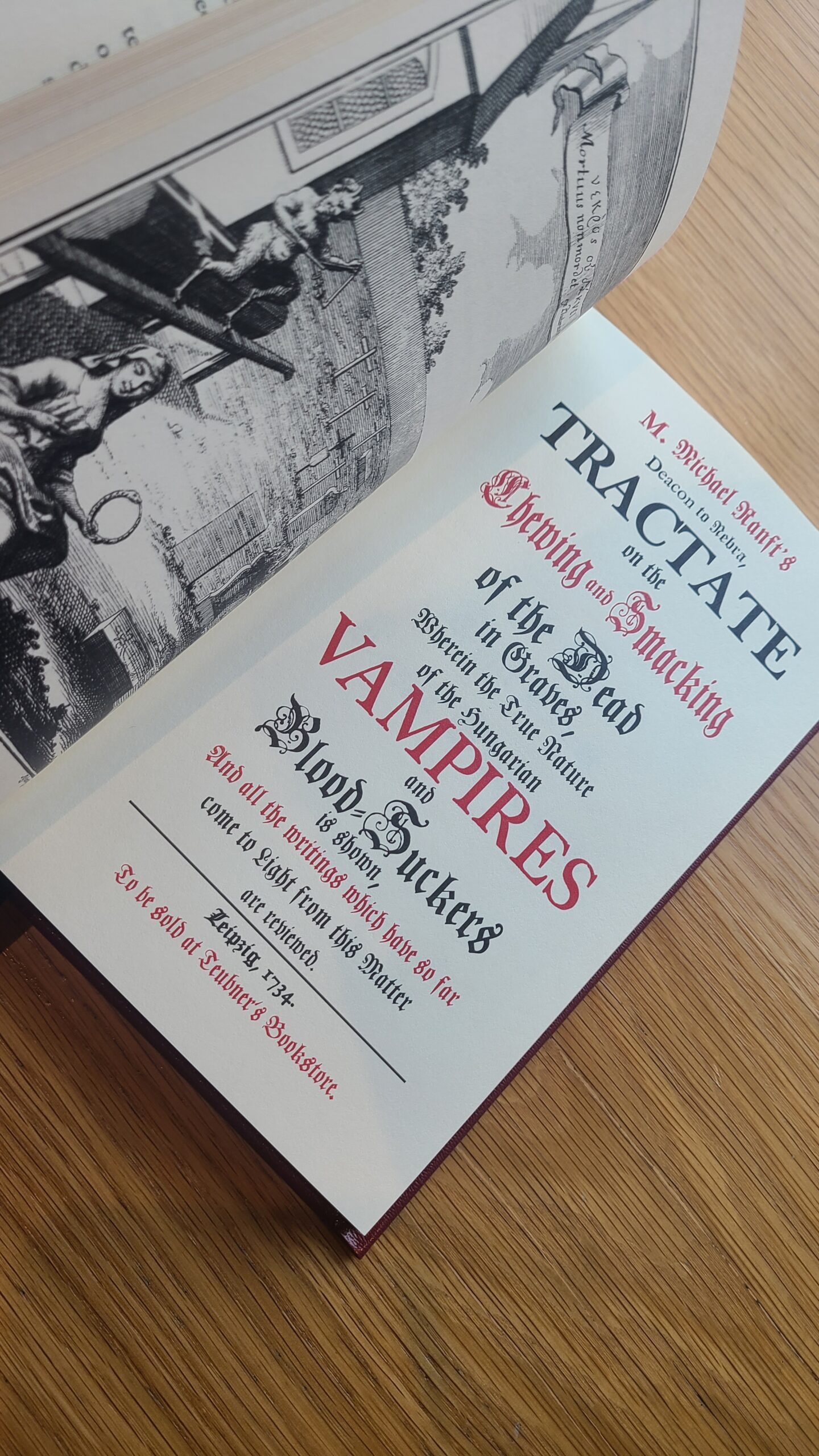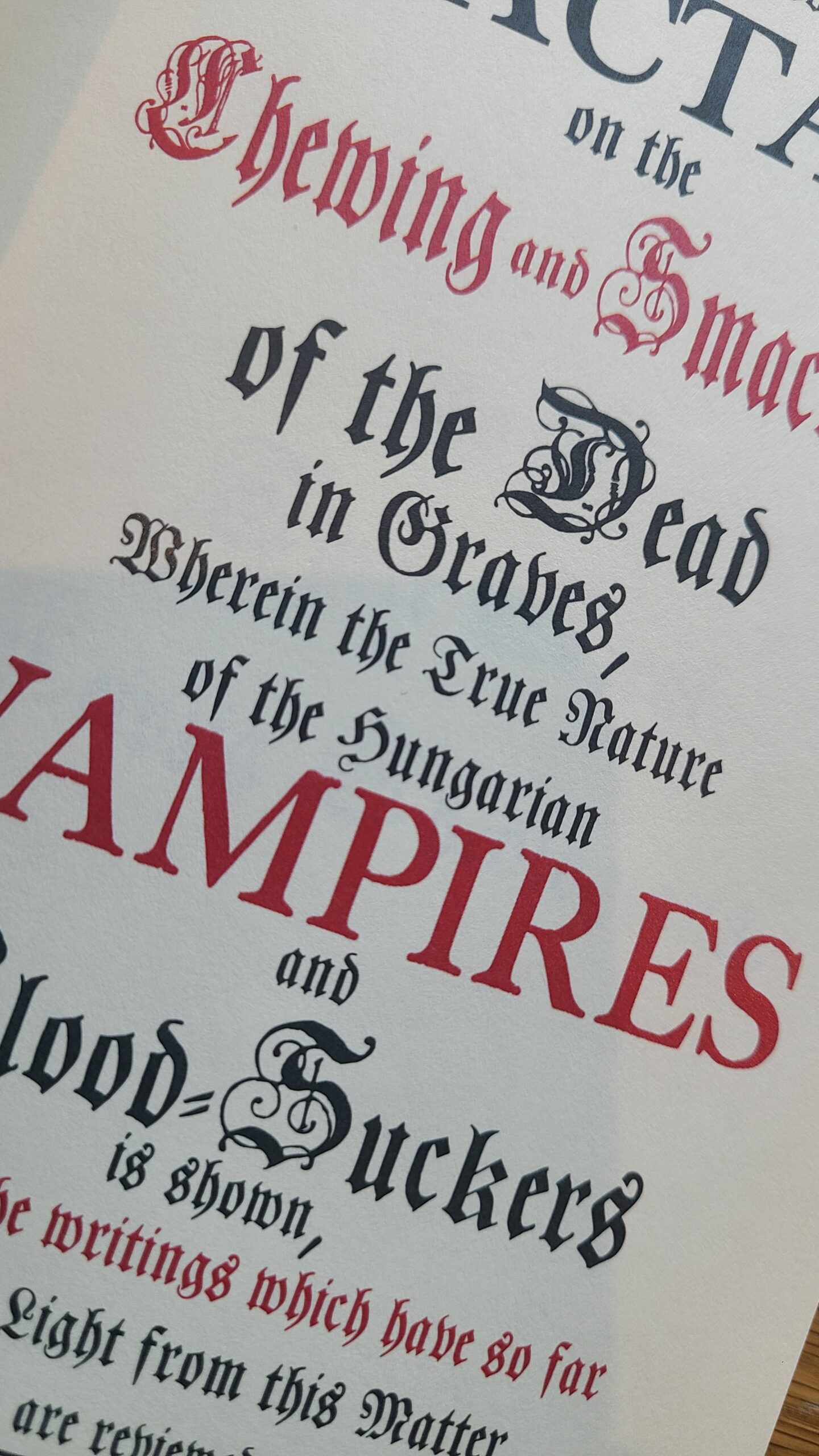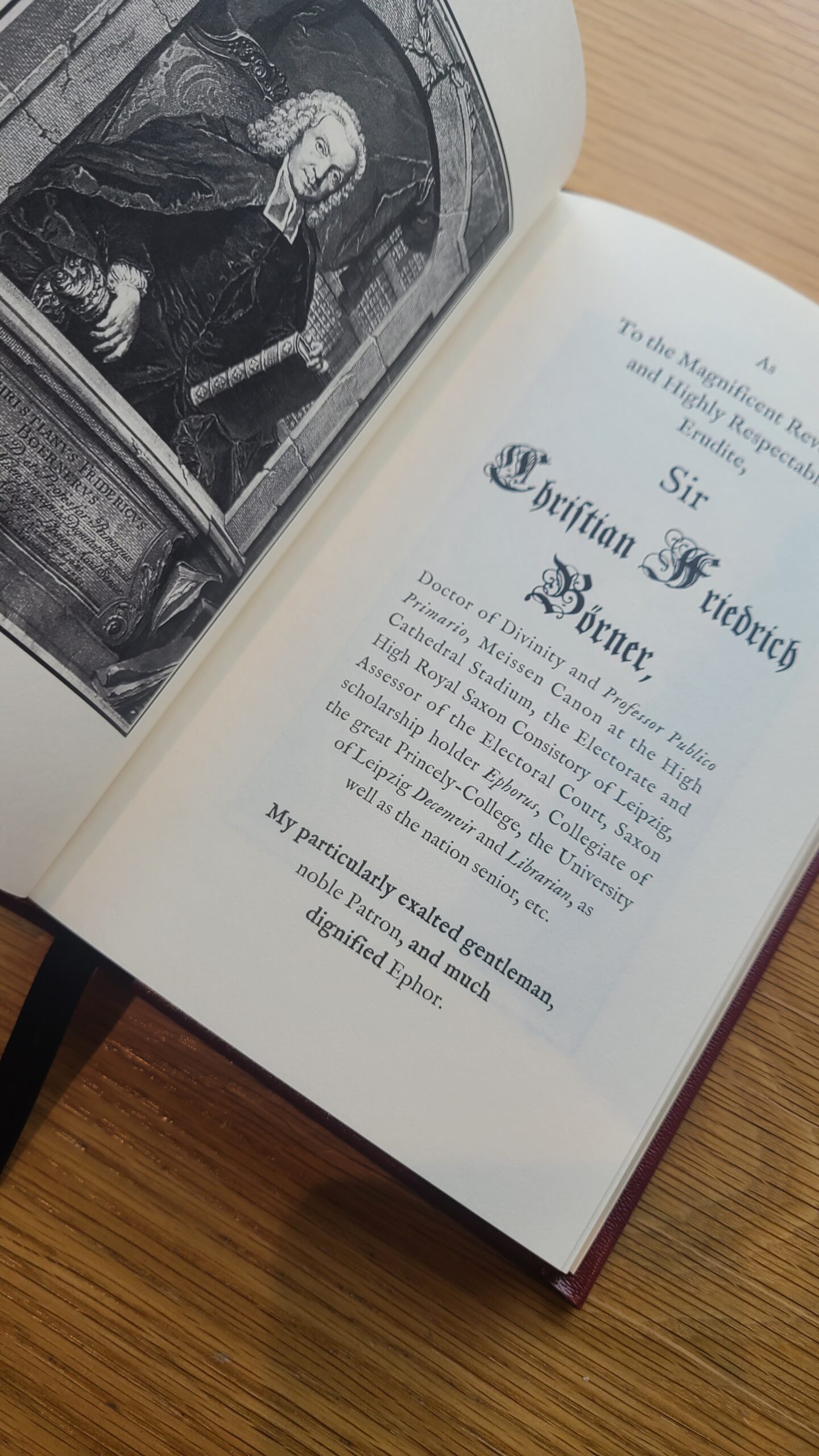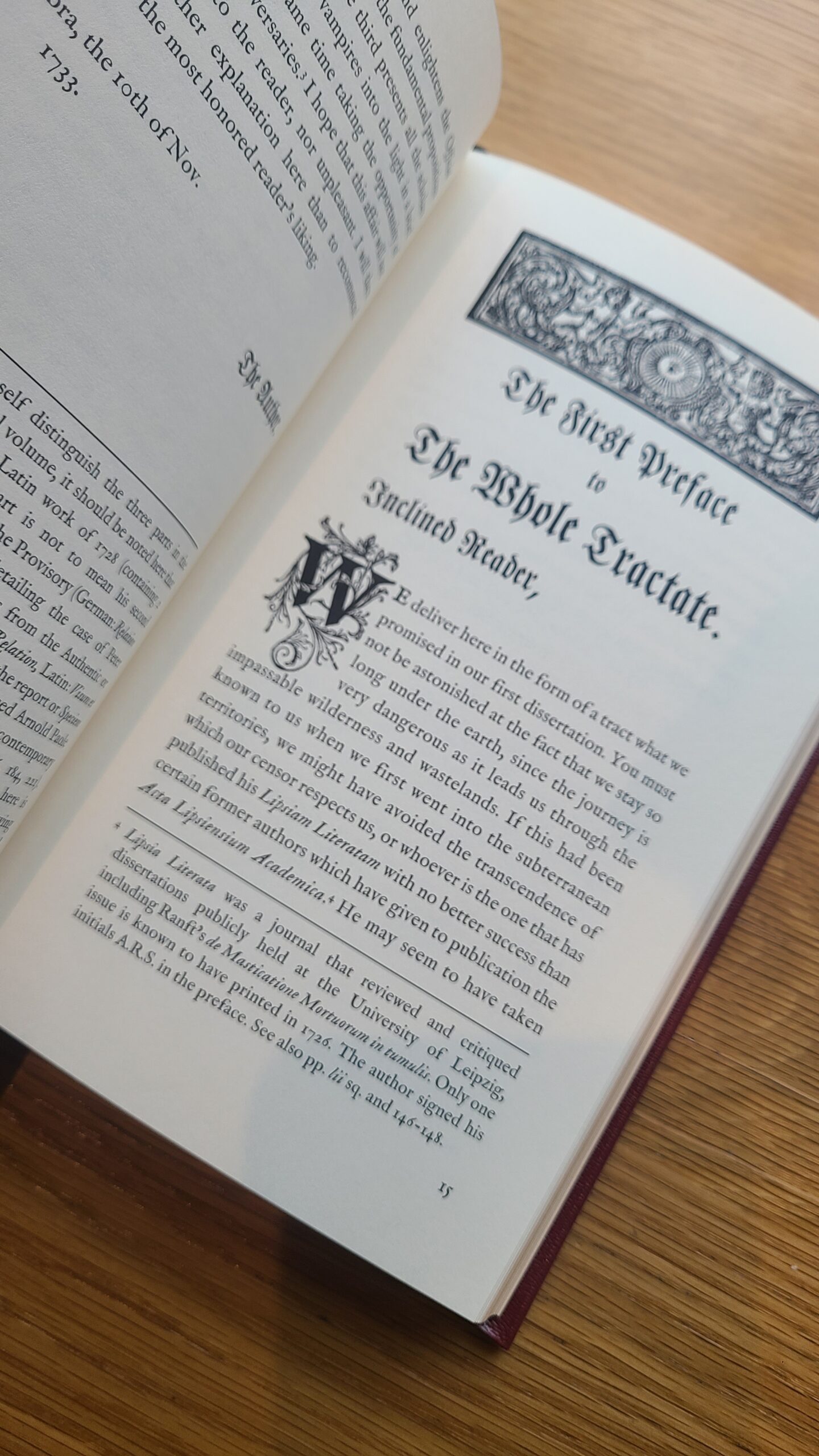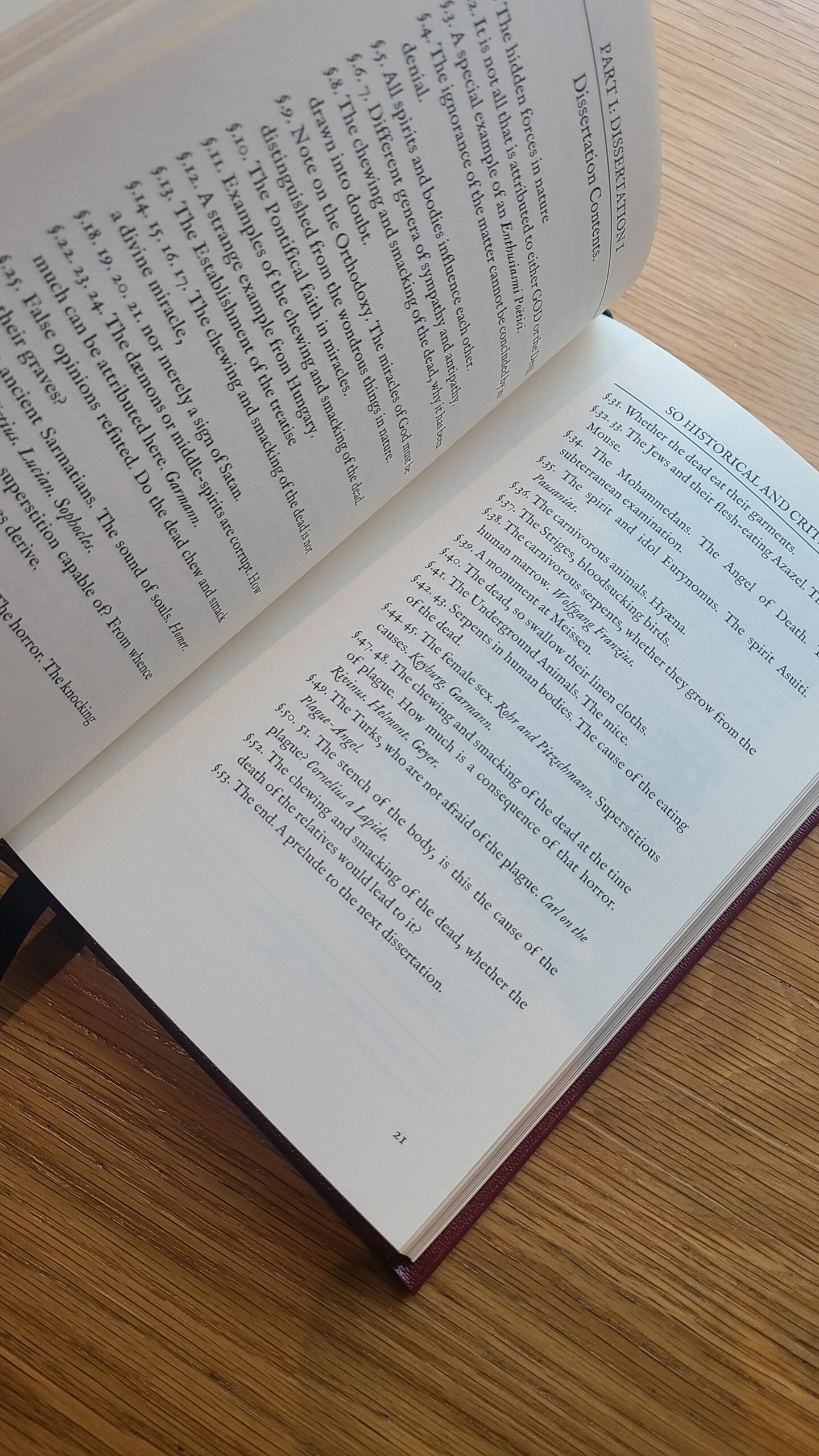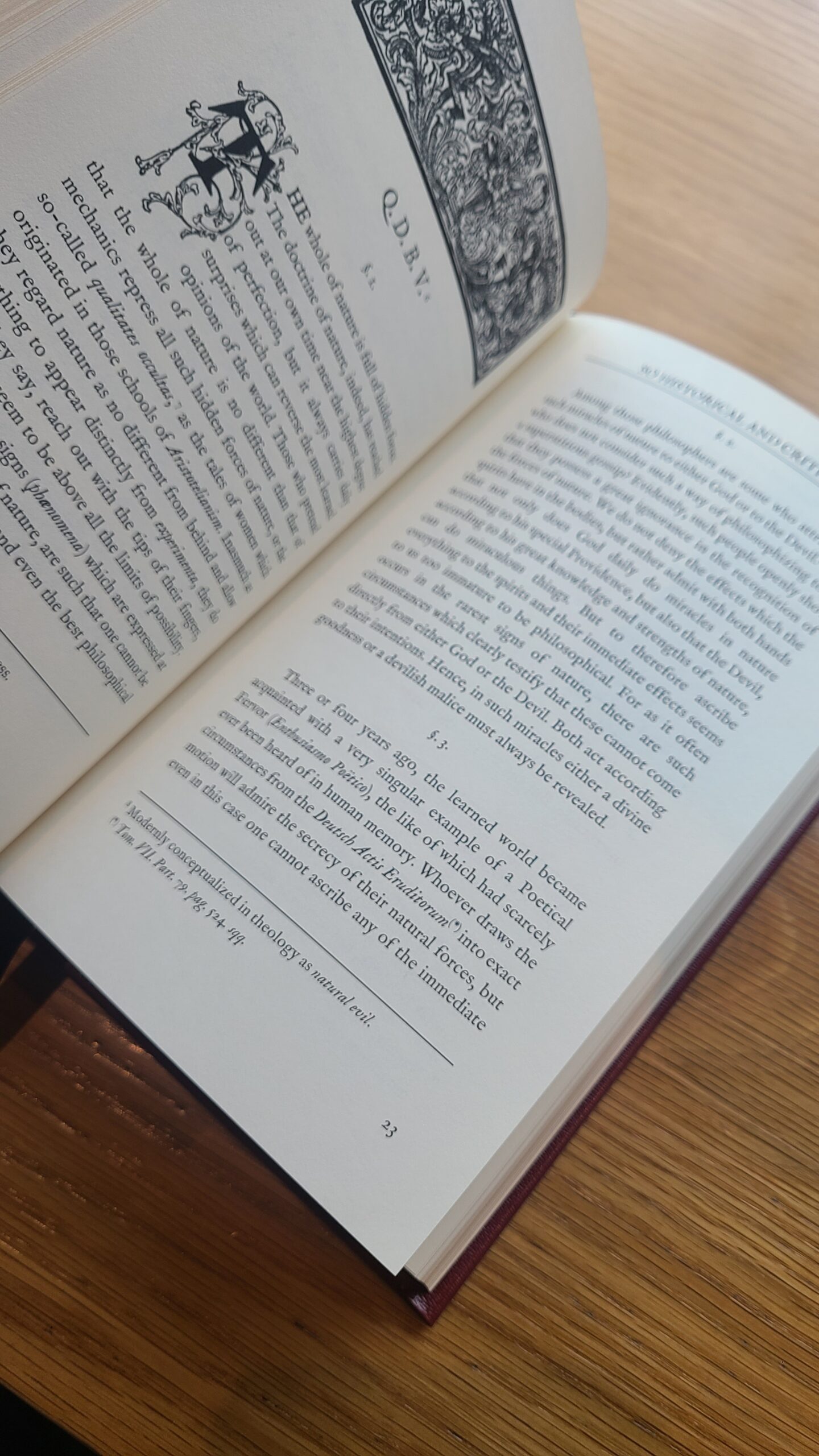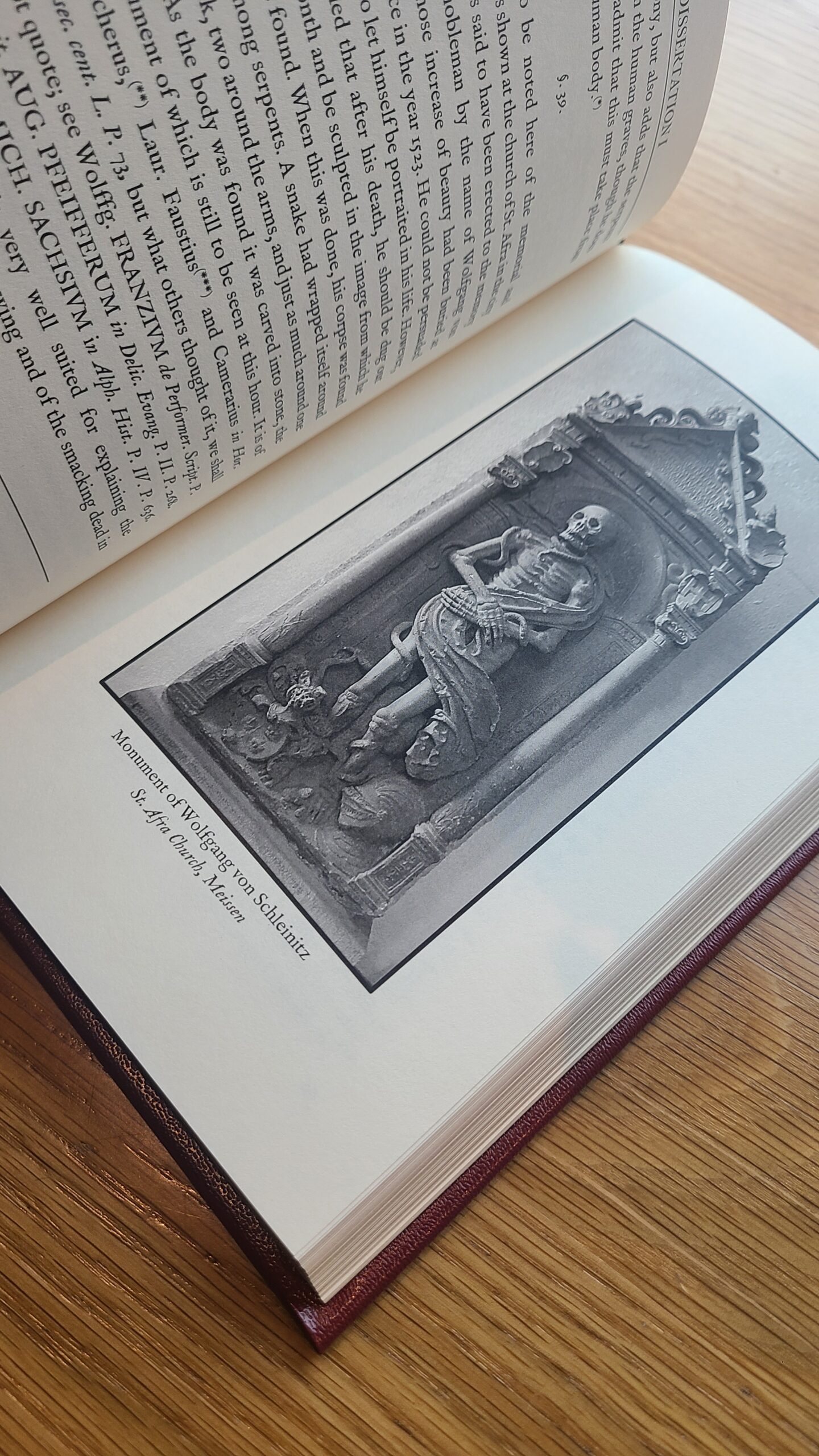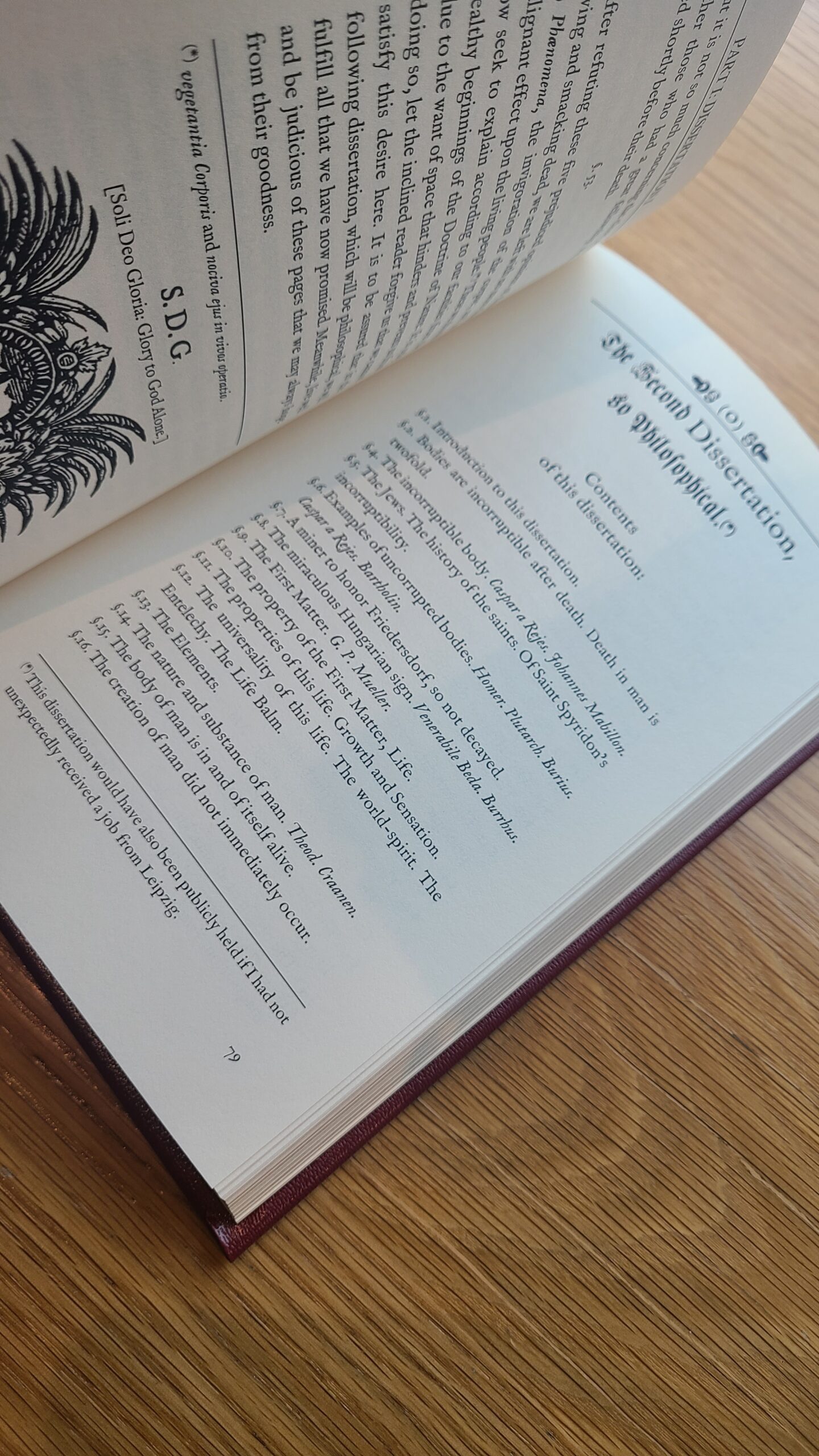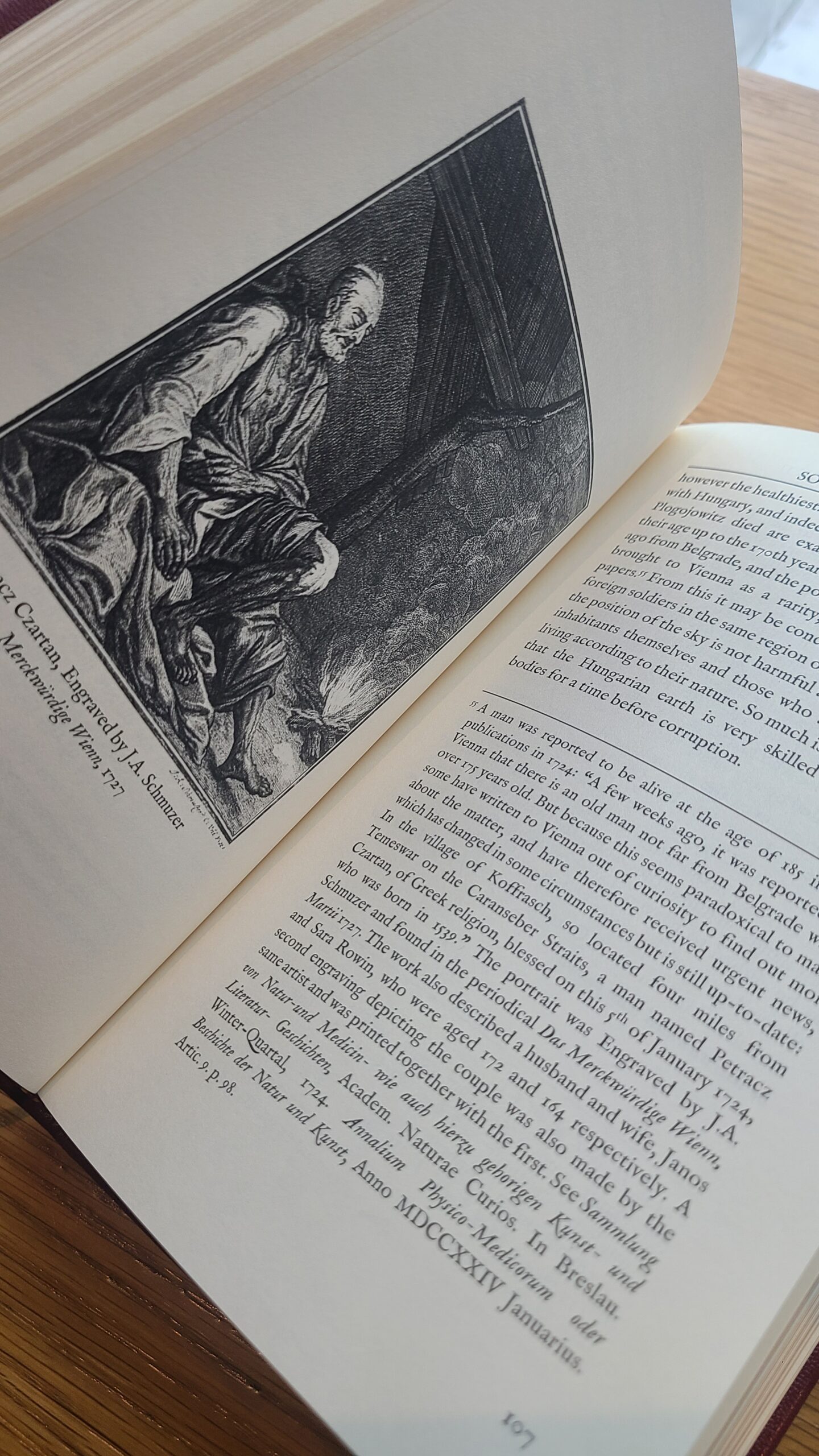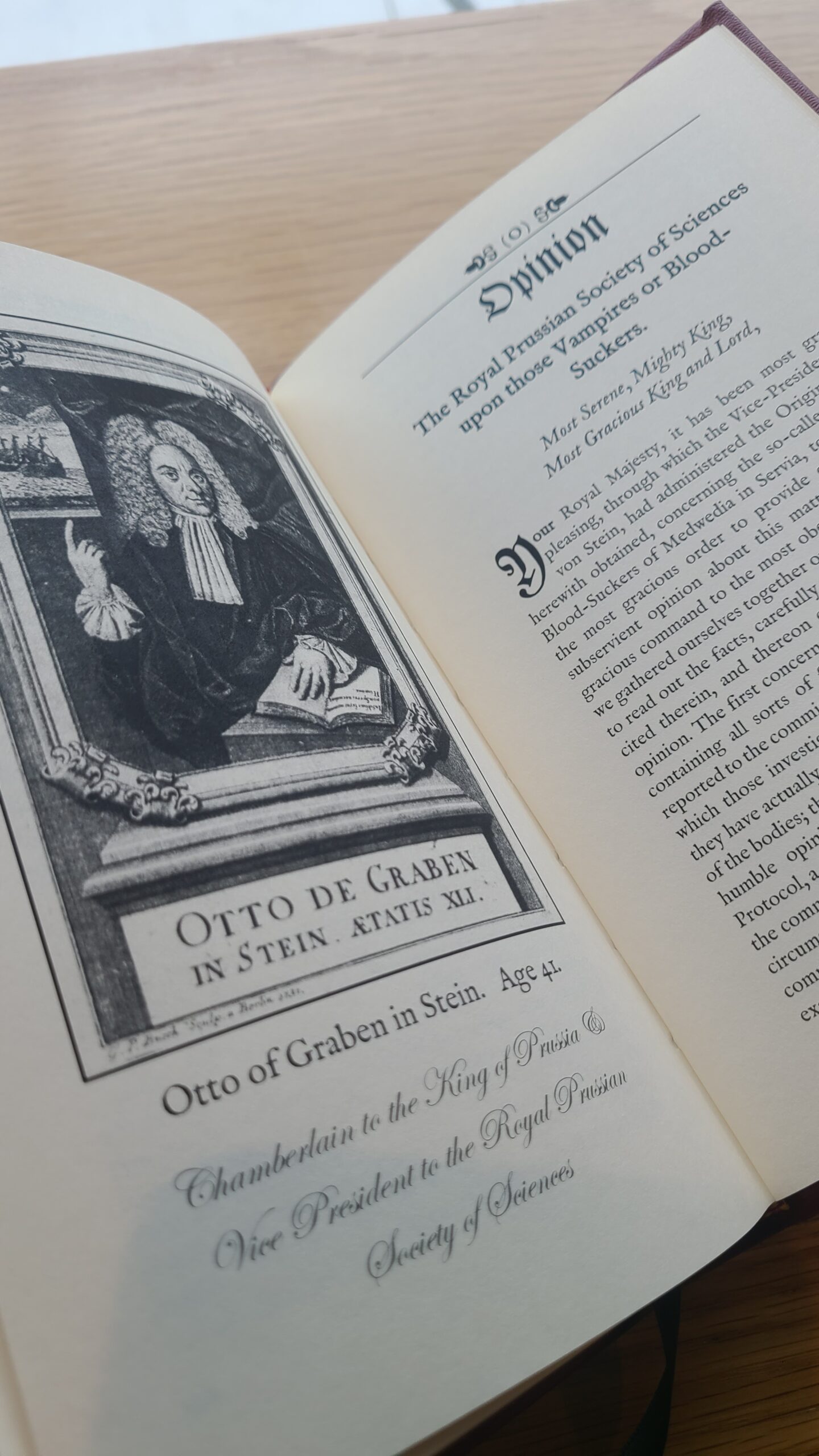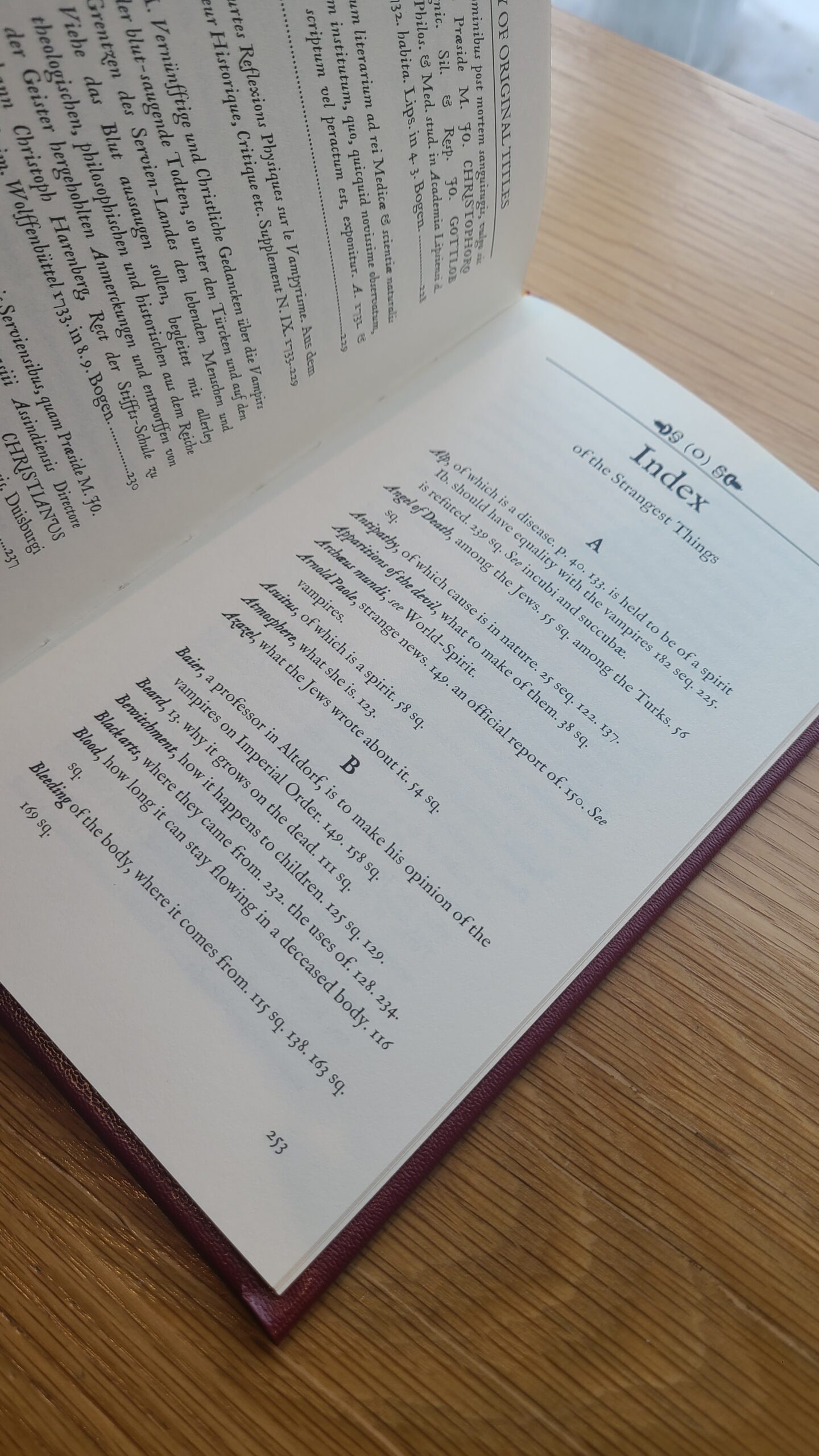The Historic Vampire Debate: Volume Occult Philosophy (1734) Signed Leatherbound First Edition
The Historic Vampire Debate Project brings a collection of historical and philosophical dissertations written between 1725 and 1734 as an academic response to the news of Imperial Reports of vampirism that spread across Europe. When a plague of mass sudden death devastated a small rural village on the borders of Hungary and Turkish Serbia in 1725, a grave was exhumed of a man named Peter Plogojowitz who was found to be without decay after 10 weeks of burial. A report from an imperial official described various strange phenomena that alleged signs of life, prompting a swift execution of the dead to end the maleficent plague affecting the living. Magister Michael Ranft was a deacon who sought to determine whether the phenomena described in the report of this so-called Vampyre were of a Godly miracle, a demonic witchcraft, or if they fell within the most hidden fabric of natural philosophy. This nearly 300-page work is considered among the most important and earliest comprehensive studies of human decay, disease, and their relation to the occult or hidden qualities of nature of the time. Ranft takes on a philosophical approach to apparitions and the perceived specters of the dead. He determines whether the occult quality of sympathy and antipathy could be applied to this case, analyzes other historical narratives where the exhumed dead were found to eat upon their own burial garments and limbs within the confines of their graves, and investigates the purported animation of the dead and the plague which was blamed on their malignant effect upon the living through principles of theology and natural philosophy.
This volume is the English Translation of M. Michael Ranft’s Tractat von dem Kauen und Schmatzen der Todten in Grabern (1734).
Part I
- Contents include both of his Dissertationes de Masticatione Mortuorum in Tumulis, regarding the case of mass death blamed on the purported vampire named Peter Plogojowitz that occurred in 1725:
- Dissertation I Historico-Critica (September 27, 1725),
- Dissertation II Philosophico (1728),
Part II
- Ranft expanded upon his earlier dissertations, tackling the report of an imperial inquest describing a plague of mass death in anther rural village of Turkish Serbia, naming the infamous Arnold Paole as a vampire in 1732. The report details an inquisition of imperial military surgeons who exhumed and autopsied 13 bodies purported to be vampires by the villagers, many of whom were subsequently destroyed through execution and incineration. Ranft transcribes the report and correspondence involved, then provides a detailed analysis of the report using the principles outlined from his previous dissertations.
Part III
- Ranft critiques 20 scholarly writings that sprung from the year 1732 from the case naming Arnold Paole had sparked a great controversy in the empire.
- The Opinion of the Royal Prussian Society of Sciences (1732) commissioned by King Frederick William I of Prussia.
The introduction gives a preliminary review of Early Modern cases of sudden death that lead authorities to exhume the bodies of the recently deceased. Finding those bodies to be without the signs of human bodily decay with the observance of strange phenomena, superstitions compelled the locals to destroy those bodies to prevent further destruction to the residents of their villages. The introduction further lays out a biography of Ranft’s life and provides an analysis of the work from the historical context of the day. Ranft critiques 20 other theological writings in the third part, of which he calls out certain authors for plagiarizing his earlier dissertations and defends his writings from scholarly adversaries.
